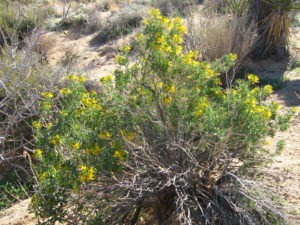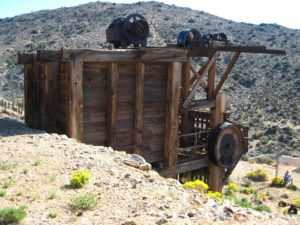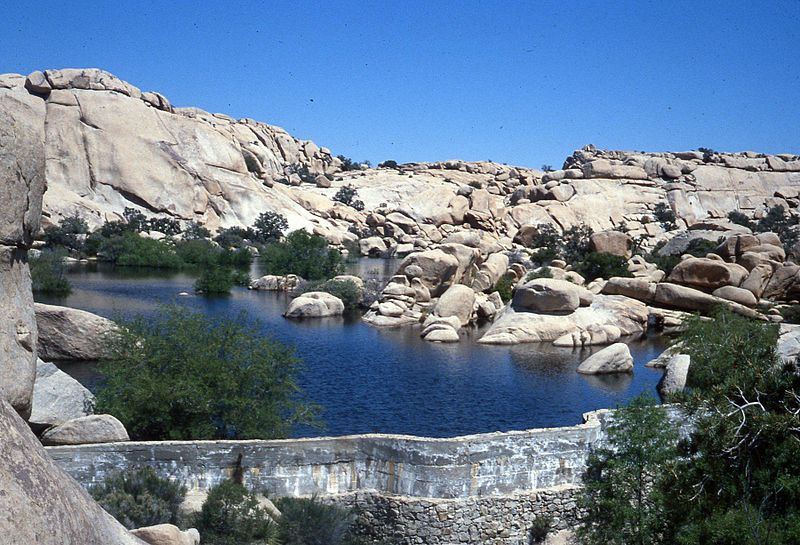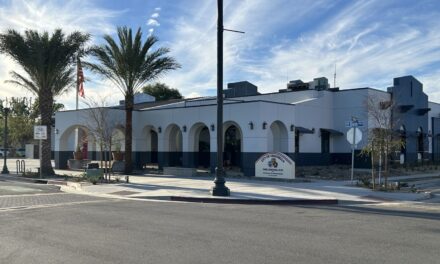Learn more about 5 great trails to explore the rich history
Most visitors to Joshua Tree National Park for the fascinating rock formations and the forests of its namesake. But the park also possesses a long, rich history with plenty of trails to see those sights.

Native Americans used the aromatic bladderpod, seen here along the Indian Cove Nature Trail, as a food.
The area that now makes up the modern park has been inhabited for several thousand years. Archeologists know the Pinto Culture hunted game and gathered plants in the area between 8000 and 4000 BCE. Rather than the stark desert it is today, at that time the land was much wetter with trees growing on the mountain sides.
Prior to the arrival of Euro-Americans, the region served as the seasonal home for the Serrano, Cahuilla and Chemehuevi tribes. The Mojave tribe also traveled through the area, using trails between the Colorado River and Pacific Ocean.
Spaniards explored the area in 1772 and then Mexicans, upon gaining independence from Spain, in 1823 sent an expedition there. The area became part of the United States in 1848 following the Mexican-American War.
During the mid-1800s, ranchers arrived and mainly grazed cattle on the desert’s tall grasses. They were followed by miners, who between the 1860s and the early 1930s operated several gold, silver and zinc mines. Ranching did not prove profitable in the dry heat, and soon the sparse mineral veins were tapped out.
The advent of the automobile brought day trippers to the desert, however. Thanks to the work of Minerva Hoyt and other activists, the area was named a national monument in 1936.
Its status was upgraded to a national park in 1994. At that time, the park’s size also increased by 235,000 square acres.
Today, Joshua Tree receives about a million visitors a year.
Some great trails to explore the rich history include:
Indian Cove Trail
Day hikers can learn how Native Americans used various desert plants on this 0.6-mile loop at Indian Cove Campground’s west end. The trail is a gently rolling path with a few built-in steps.
Barker Dam Nature Trail
To collect and preserve the scarce water, ranchers long ago built rainwater catchments called “tanks.” This 1.1-mile nature loops heads to one such site, Barker Dam. It’s among the best places in the park to see wildlife, including bighorn sheep, jack rabbits, birds and even frogs. The trailhead is on Park Boulevard.
Ryan Ranch Trail
The easy 1-mile round trip trail heads along an old ranch road to a century-old adobe homestead. See if you can spot a bright sheen on the adobe bricks, as they were constructed with gold dust from a local mine. The trailhead is off of Park Boulevard east of the road to Ryan Campground.
Lost Horse Mine Trail

The Lost Horse Mine stamp mill is one of the best preserved in California thanks to the dry desert environment.
The best-preserved of the park’s mines and mills is Lost Horse Mine, which produced about $5 million in gold and silver between during the early 1900s. The trailhead for the 4-miles round trip hike is off of Lost Horse Mine Road, a branch of Keys View Road. If you’d like to see the unsuccessful Optimist Mine, where only a stone chimney remains, continue on the Lost Horse Mine Loop, which runs 6.5 miles.
Porcupine Wash-Ruby Lee Mill Site Trail
The ruins of a well and mill site sit along the northern leg of this 8.8 mile loop at the base of the Hexie Mountains. Pickup the trail from the parking area on Pinto Basin Road.
Note that during summer, Joshua Tree National Park can be extremely hot. Always carry plenty of water and from May to September time hikes around dawn and sunset when temperatures are cooler.
Image Sources
- Barker Dam: Rob Bignell







